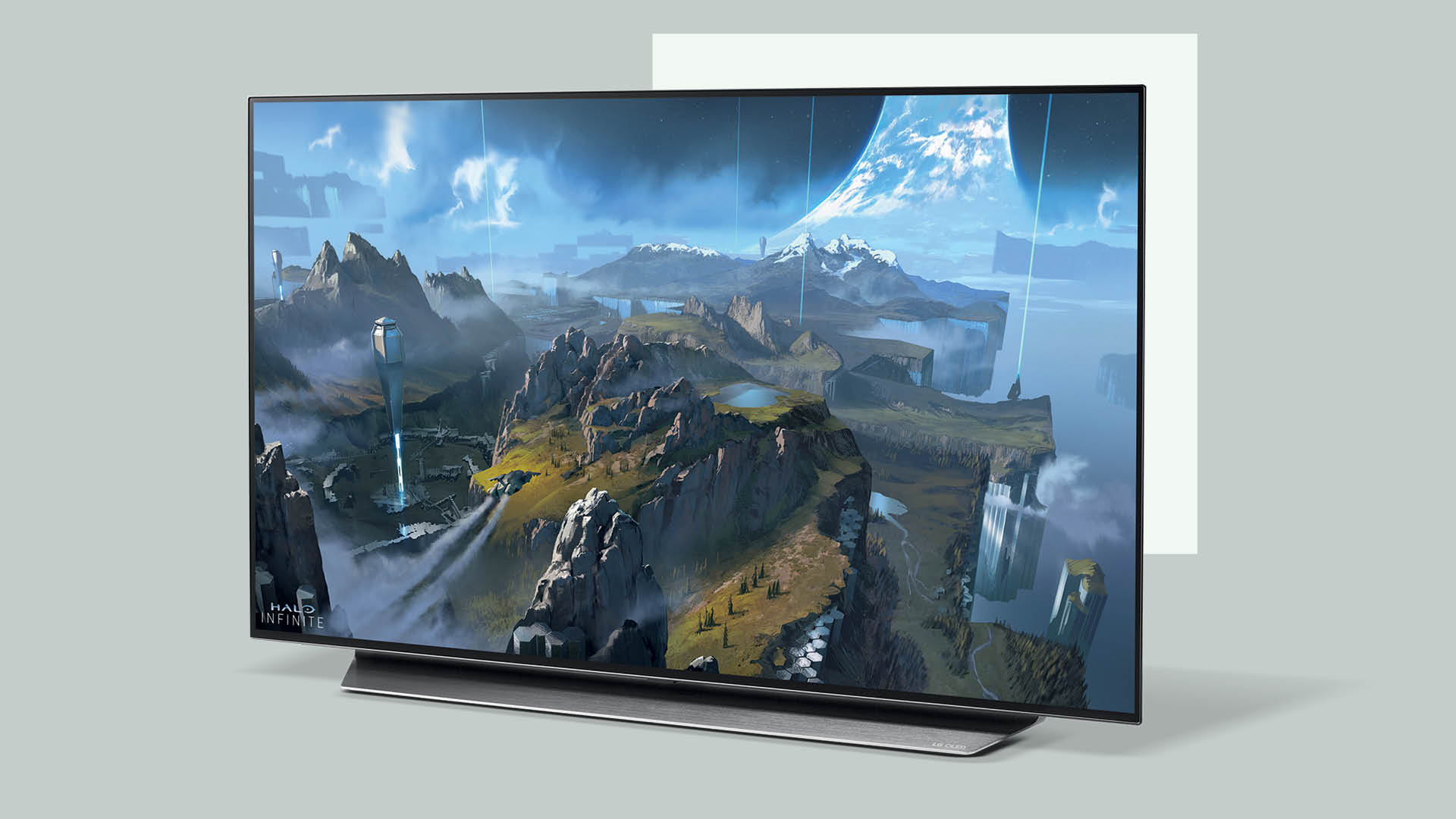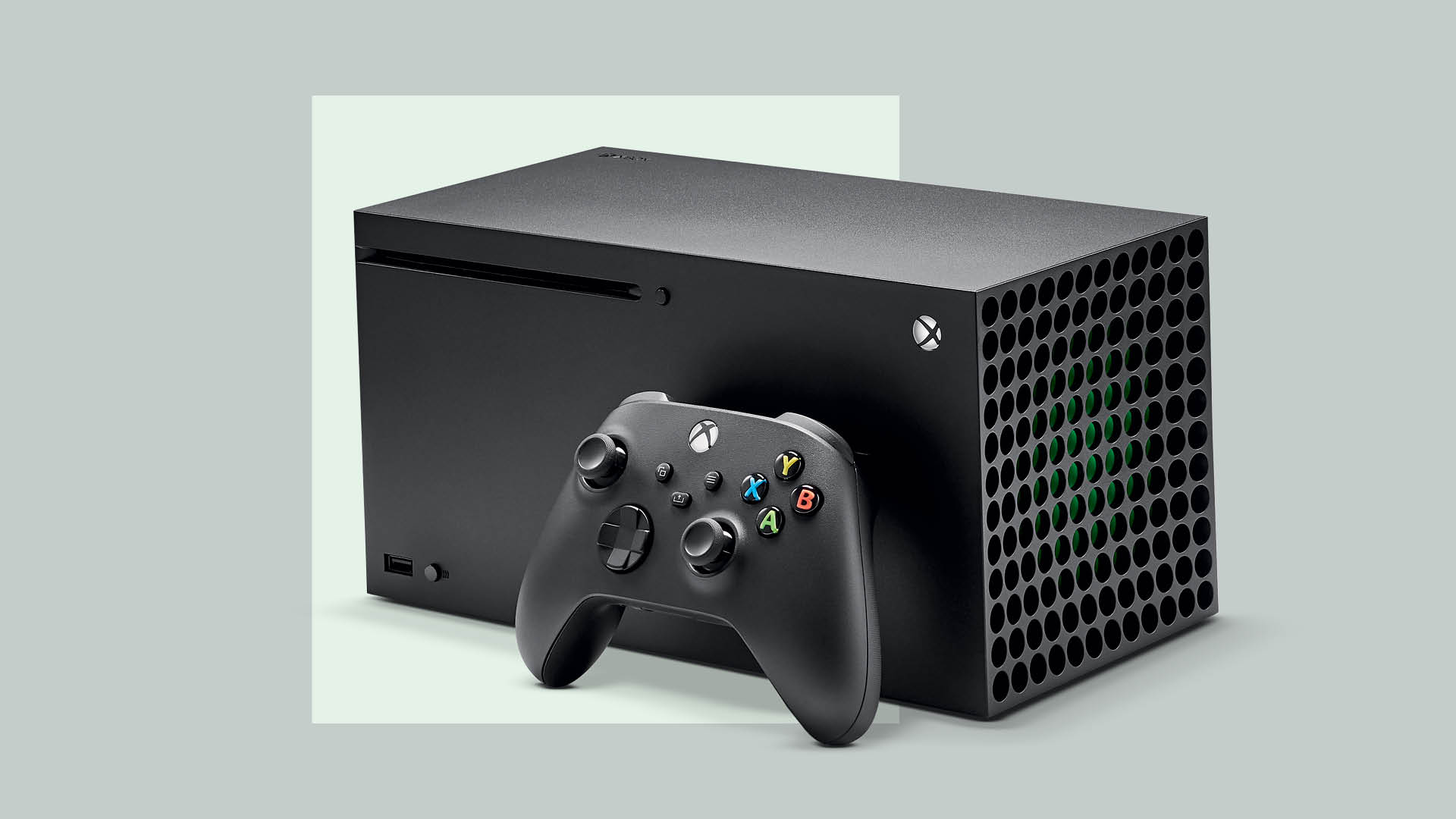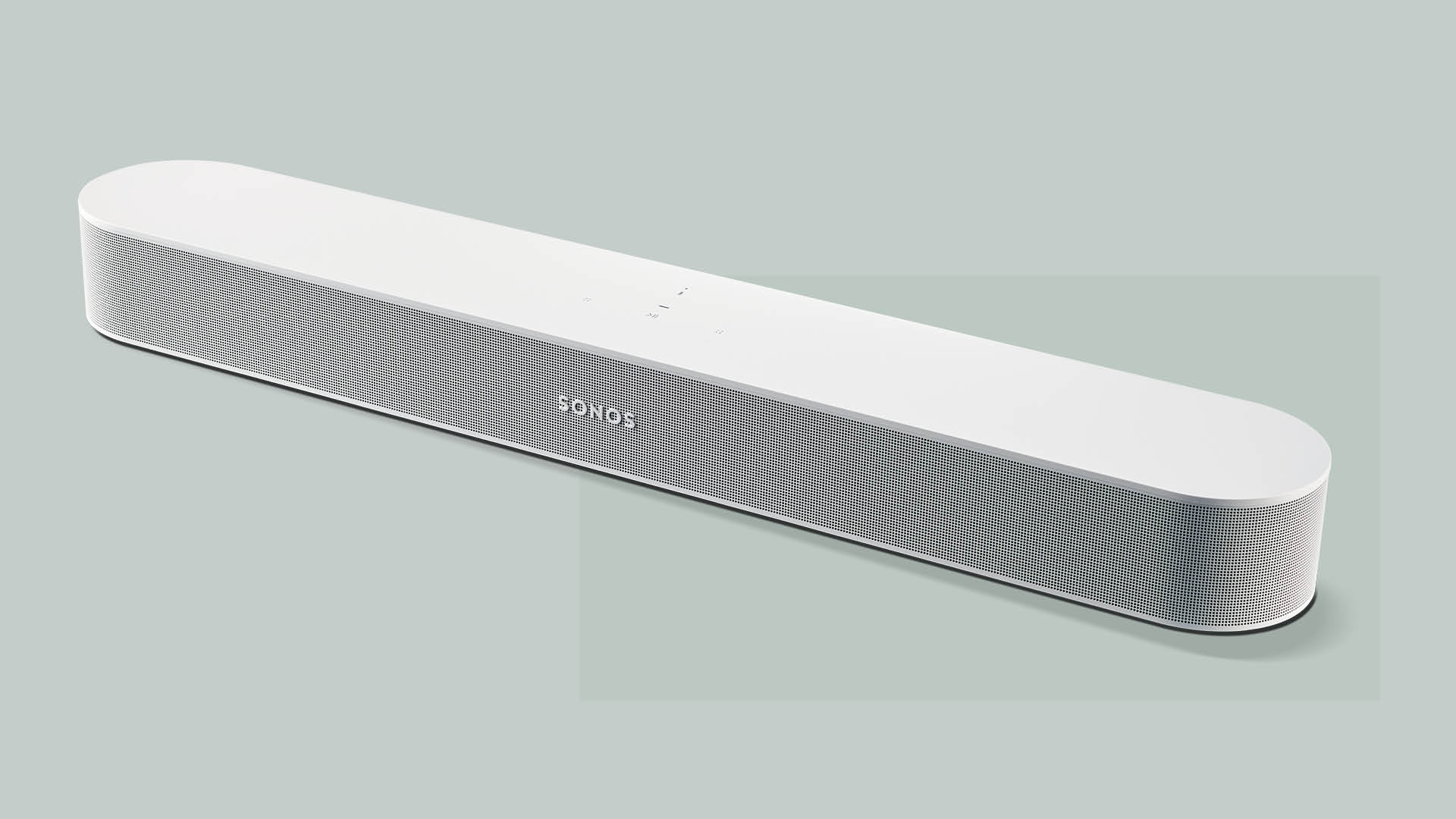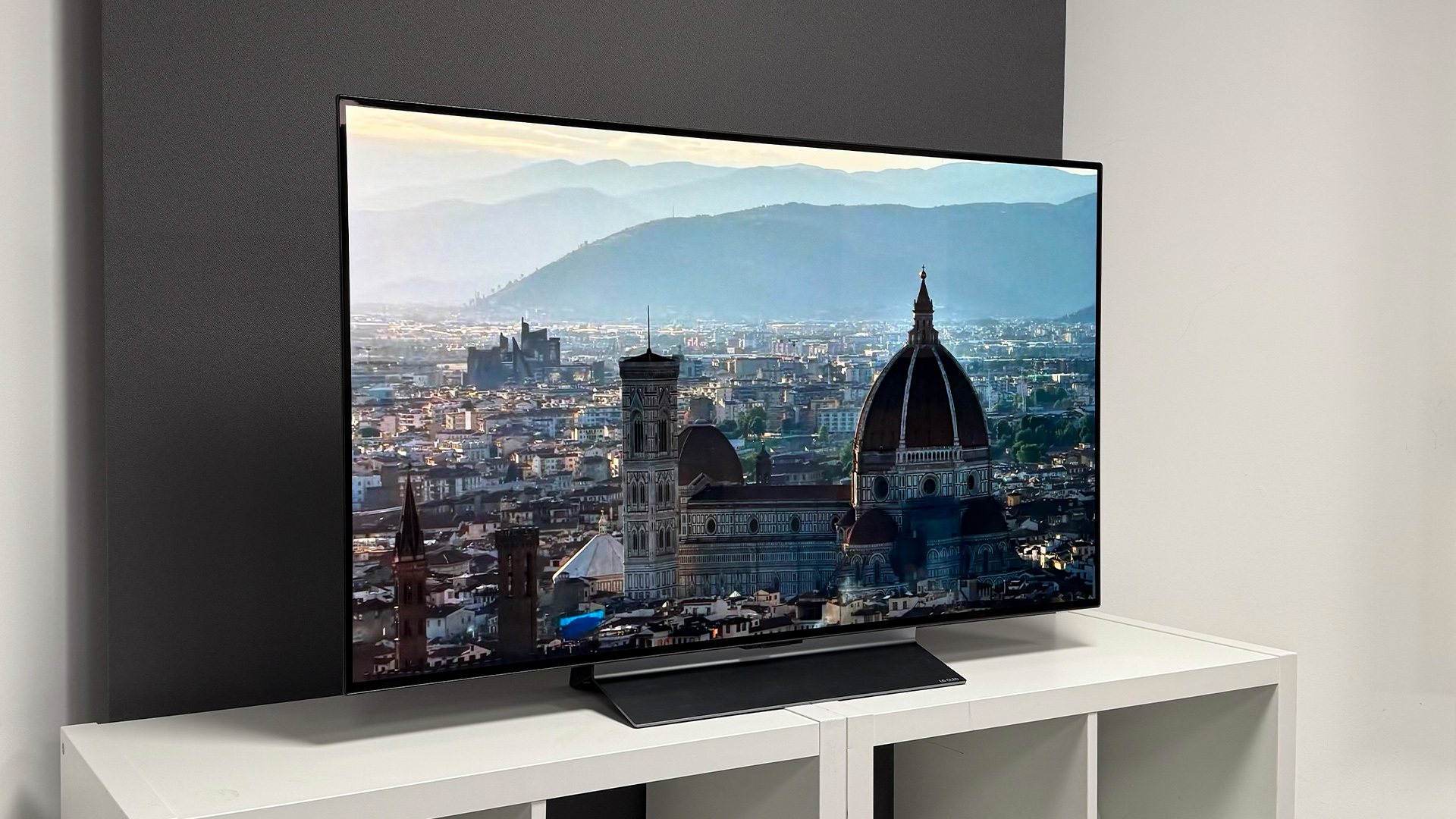This sensational gaming system combines OLED TV tech, HDMI 2.1 support and Dolby Atmos audio
Xbox, Sonos and LG form the perfect AV partnership

Gaming is a massive business and a major part of many people’s lives and enjoyment. It makes sense, then, for us to build you a system that is a fine home cinema system in its own right, but that is also absolutely perfect as a bespoke gaming set-up.
For this particular system, we're bringing into play all the gamer-friendly features of HDMI 2.1 by combining a cutting-edge next-gen games console, with a brilliant small-screen OLED TV and gluing the pair together with a talented Dolby Atmos soundbar. Read on for a complete rundown of all the kit involved.
The system
4K TV: LG OLED48C1 (£999 / $1297/ AU$2095)
Games console: Xbox Series X (£449 / $499 / AU$749)
Soundbar: Sonos Beam Gen 2 (£449 / $449 / AU$649)
Total: £1897 / $2245 / AU$3493
4K TV: LG OLED48C1

The issue that serious gamers face when it comes to buying a TV is only now being properly resolved by the big brands. To get the best from the next-gen consoles – the PS5 or the Xbox Series X that we are using here – the television needs to have HDMI 2.1 inputs that support a number of different specifications. Many sets currently available have one or two HDMI 2.1 ports, but that may not be up to any future-proofing requirements – especially for those owners who have invested in both of the next-gen consoles, and who also want to use the HDMI eARC to send sound to a separate unit. Many sets combine that functionality in just one HDMI output, which makes a multi-console set-up impossible (without continually swapping cables at least). That’s not the case with this 48-inch LG.
A gaming system is often a second set-up in a household, so we are keen to plump for an OLED that isn’t inordinately massive and that is also more likely to be an appropriate fit for a smaller living room.
And one of the great reasons to buy an LG TV, apart from the fact that the Korean giant manufactures every OLED panel, is that it comes with almost every feature available. In fact, pretty much the only compromise you have to make is that it doesn’t support Samsung’s HDR10+ format. But, what with Dolby Vision still being the market leader in the dynamic HDR space, we don’t see that as much of a problem.
The TV’s brain is the latest incarnation of LG’s Alpha 9 processor, the quad-core Alpha 9 Gen 4, bringing a few picture and sound upgrades. Object Enhancement is now sophisticated enough to recognise whole bodies as well as faces, animals, cars and other things. And sound can now be upmixed to an Atmos-virtualised 5.1.2.
The latest hi-fi, home cinema and tech news, reviews, buying advice and deals, direct to your inbox.
The gaming features are the big draw for us in this particular system, though. The reason we are here, with this set, is that all four of the HDMI 2.1 ports are rated at 40Gbps and are capable of 4K@120Hz, VRR (variable refresh rate, in all current formats) and ALLM (auto low-latency mode). Input lag, meanwhile, is less than 13ms. eARC is supported, too, so we can hook everything up to the soundbar without issue or loss of performance.
LG’s TV operating system, webOS 6.0, was updated for 2021. It is stacked with apps and services (BT Sport, Apple Music and Tunein are the only significant absentees), handles mirroring over AirPlay 2 and is generally easy and pleasant to use.
LG should be praised for its well-calibrated picture presets. The Standard and Cinema modes offer genuine out-of-the-box options for two different but equally valid tastes, with the former on the contrasty side and the latter very natural and believable, even if the motion processing needs pulling back a touch.
Cinema Home is the one to go for as far as general viewing goes. Fine tune with the sharpness slider and adjust the colour temp to the look you like and you’ve got it all within a matter of minutes.
Watching Guardians Of The Galaxy 2 on 4K Blu-ray, we’re delighted with how well LG’s OLED processing reveals dark detail in the fireside scene on Berhert. The flickering side lighting from the campfire is handled well enough to be delivered with a good tonal variation across the faces of Ego and the Guardians. Details in the shadows are still clear too.
The audio performance of LG’s C-series has come on leaps and bounds. Gone is the muddy fudge of rear-firing speakers in favour of a 2.2ch 40W set-up on the bottom edge of the TV. For watching the news or some daytime telly, it’s perfectly serviceable. But of course, it’s not a patch on a decent soundbar when it’s time to enjoy a movie or full-on gaming session.
Games console: Xbox Series X

Either one of the next-gen games consoles would, of course, do sterling service in this system; the PS5 and the Xbox Series X are both excellent media players and 4K Blu-ray players in their own right and fit the neatness of this system beautifully.
We have plumped here for the Xbox, however, as while both consoles are superb all-rounders, we think the Xbox’s Game Pass Ultimate offering (£11 a month for access to loads of top games, as well as online gaming and more) is a more modern, streamlined deal for gamers of 2022. Listening to music from the cloud without actually owning any physical media has well and truly taken hold in that world, and we can see no reason for gaming not to follow that model. It works, it’s fuss-free, and means you don’t have to worry about which game to invest in.
Soundbar: Sonos Beam Gen 2

The Sonos Beam (Gen 2) that we have included in this system not only lives up to the high bar set by the original Sonos Beam, it exceeds it by a margin that more than justifies its new feature set and higher cost. The decision by Sonos to use processing power and forward-facing drivers to recreate Dolby Atmos has paid off with a more capable and effective handling of the format than many more expensive soundbars with upward-firing drivers.
Not too many soundbars at this price point come with networking capabilities, but this being a Sonos product, the Beam Gen 2’s ability to integrate into a wireless multiroom system is fundamental to its design. This means you will need the Sonos S2 app to get the most out of your purchase and get it online. While you can control the volume from your TV remote, the app is where you will find access to Trueplay (Sonos’s relatively involved room calibration technology), a two-band EQ and confirmation of which audio codec you are currently receiving. You’ll also need the app if you wish to connect it to other Sonos products to build a surround system.
In terms of audio formats, the Beam Gen 2 supports stereo PCM, Dolby Digital, Dolby Digital Plus, Dolby TrueHD, Dolby Atmos (both the Digital+ and TrueHD versions), multichannel PCM and Dolby Multichannel PCM. Decoding for DTS digital surround will be added to this and other Sonos products at a later date but this sadly won’t extend to DTS:X.
Dolby Atmos is really the headline feature of the Beam Gen 2, but there are limits to what Sonos can achieve as far as overhead sound goes without any height drivers. Genuine overhead sounds are a stretch too far, perhaps, but there’s more to Dolby Atmos than helicopters, and the Beam 2 handles the format better than any similarly priced soundbar. Atmos allows a film’s production mixers to place sounds and music as discrete objects within a soundfield, and having the ability to decode it means users can watch movies with a more compelling soundtrack, be it a sedate drama or car-flipping blockbuster.
Verdict
This system is a wonderful set-up for all-purpose home cinema enjoyment and it also happens to be a brilliant option for gamers. LG's OLED TV delivers one of the best picture performances you can get at the price point and screen size. It's also the perfect partner for the Xbox Series X given the gaming smarts and support offered by both products. Add the Sonos soundbar for excellent one-box audio and you have a winning system for anybody.
MORE:
Enjoy virtual surround sound on the move with this superb portable AV system
These are the best TVs for PS5 and Xbox Series X/S

Jonathan Evans is the editor of What Hi-Fi? magazine, and has been with the title for 18 years or so. He has been a journalist for more than three decades now, working on a variety of technology and motoring titles, including Stuff, Autocar and Jaguar. With his background in sub-editing and magazine production, he likes nothing more than a discussion on the finer points of grammar. And golf.
